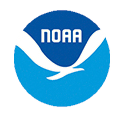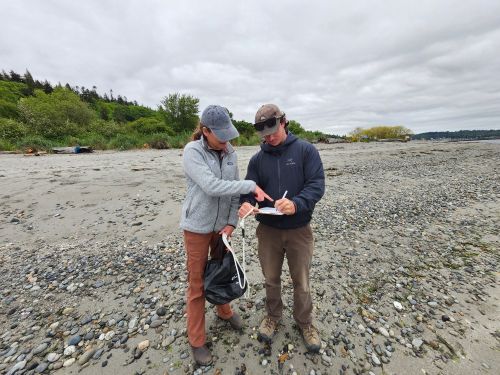May 27, 2025
Crabbers and Scientists Collaborate to Remove Abandoned Fishing Gear and Protect Blue Crabs Along the Mid-Atlantic Coast
Commercial crabbers from Maryland, New Jersey, and Virginia are collaborating with scientists from Stockton University in New Jersey and the William and Mary’s Batten School and the Virginia Institute of Marine Science (VIMS) to reduce derelict fishing gear and support the Mid-Atlantic region's productive blue crab fishery. With support from the NOAA Marine Debris Program, these two projects help sustain crabbers by providing employment opportunities during the fishing off-season. Crabbers help develop solutions to minimize trap loss, identify and remove lost pots in the water, salvage usable pots, and return costly gear to the commercial crabbing community. The winter crab trap recovery season recently came to a close, and both projects achieved significant milestones.
NOAA Trains Nationwide Marine Debris Survey Participants
The NOAA Marine Debris Program recently hosted a Marine Debris Monitoring and Assessment Project Nationwide Survey training at NOAA's Western Regional Center in Seattle, Washington. In partnership with 1stMission, 16 participants representing coastal communities across the nation learned and practiced beach survey protocols including establishing a survey site, following best practices to prevent environmental disturbances, identifying and categorizing marine debris, collecting and managing data, and properly disposing of debris. This team is prepared to implement the Nationwide Survey—the first conducted by NOAA at this scale—which will help us better understand marine debris on U.S. shorelines.
Public Input Welcome on Metro Container Draft Damage Assessment Plan
The Draft Natural Resource Damage Assessment Plan for the Metro Container Superfund Site in Trainer, Pennsylvania is now available. Interested members of the public are encouraged to review and provide comments on the draft plan during the 30-day public comment period open through June 4, 2025. The Metro Container Superfund site lies southwest of Philadelphia along Stoney Creek, a tidal tributary of the Delaware River and is adjacent to a petroleum refinery, auto salvage operation, metal scrap operation, and rail yard. Past industrial operations resulted in elevated levels of contamination from polychlorinated biphenyls (PCBs), volatile organic compounds (VOCs), polycyclic aromatic hydrocarbons (PAHs), and metals contaminating soil and groundwater. Public participation during the Natural Resource Damage Assessment (NRDA) process is critical to fully capturing the impacts of contamination.
Web Highlight
Restoration of Polluted Coastal Environments in the Northeast
From the Gulf of Maine to the Chesapeake Bay and the Mid-Atlantic Bight, the waterways of the Northeast region of the U.S. support a rich variety of important plants and wildlife. Over the past five years, NOAA and co-trustees have secured eight pollution settlements from seven hazardous waste sites and one oil spill in the Northeast region. These efforts are used for restoration projects that benefit the impacted communities, the ocean economy, and coastal recovery by enhancing robust fisheries, protecting endangered species, revitalizing coastal habitats, and improving recreation access.
Caption: Alewife, a type of river herring, use freshwater areas as spawning and nursery habitat and spend most of their life at sea. Image credit: U.S. Geological Survey. An official website of the United States government.
An official website of the United States government. 


